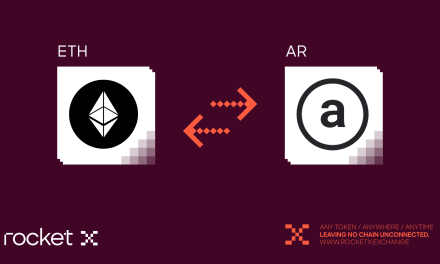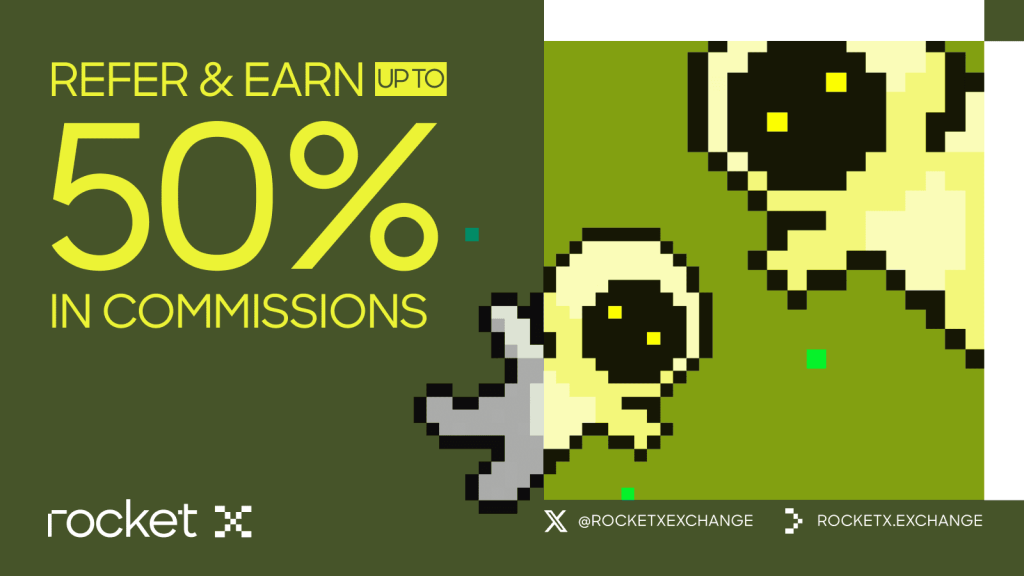
Introduction
Imagine an AI network that is not controlled by any single company. A network where AI models are not kept inside closed labs but are built, shared, and improved by people across the world. This is what Bittensor is creating. Instead of keeping AI as a private product, Bittensor works like an open marketplace where useful intelligence can earn real rewards in the form of TAO, which is the native token of the network.
This year has become an important turning point for Bittensor. New upgrades, such as Dynamic TAO and the subnet deregistration rule, have made the network more efficient and competitive. At the same time, big institutional steps like the Grayscale TAO Trust filing and investment interest from DCG are taking TAO beyond a small crypto niche and moving it toward wider market attention.
This guide will help you understand Bittensor, the value of TAO in the decentralized AI economy, and the simple process to buy and store TAO using RocketX.
What is BitTensor?
Bittensor is a decentralized and open public AI network. It turns artificial intelligence into a permissionless marketplace where anyone can build or contribute. Instead of AI being controlled and monetized by private companies, people around the world can add models, training, compute, or data to the network and earn TAO when their work is useful. This creates an open and evolving AI economy where rewards go to the most valuable contributions rather than to a few central owners.
Core Characteristics of Bittensor
Incentive-based AI collaboration
People who add useful intelligence are rewarded with TAO when other participants rate their work as valuable.
Subnet-based design
AI tasks are divided into focused subnets such as language, routing, or data retrieval. Each subnet grows on its own but remains part of the same economic system.
Continuous performance filtering
A new policy removes weak or inactive subnets and keeps only the most useful ones active. This improves efficiency and keeps capital flowing to the best AI work.
Open access and community control
Anyone can contribute, validate, or build tools on top of Bittensor. TAO holders can also vote on proposals and influence the future of the network.
Through this model, Bittensor is not only decentralizing AI infrastructure. It is also decentralizing the way the world discovers, ranks, and funds the most valuable AI.
Exploring BitTensor’s Subnetworks
Bittensor is built around a network of many smaller subnetworks. Each one focuses on a specific type of AI work, such as text generation, image recognition, data search, prediction, or routing. You can think of every subnetwork as its own small AI marketplace that tries to produce the most useful output to earn TAO rewards.
How Subnetworks Work
1) Specialization and Competition
Each subnetwork is created for a specific kind of task. Some handle language, some handle images, and others handle recommendations or predictions. They compete with each other, and those with better results earn more TAO.
2) Collaboration and Knowledge Sharing
These subnetworks do not work in isolation. They evaluate each other’s outputs and share useful signals. This allows one subnet’s progress to improve the accuracy and efficiency of others.
3) Scalability and Flexibility
Instead of depending on one large AI system, Bittensor grows through many focused subnetworks. New ones can be added and weak ones can be removed without disturbing the entire network.
To maintain quality, Bittensor has introduced a rule that allows only 128 subnetworks to stay active. When a new subnet enters, the weakest one is removed based on its performance score. This system keeps the network efficient, encourages constant improvement, and ensures that rewards go to those who produce real value.
The Dynamic TAO upgrade has added another important layer. Subnetworks can now issue their own Alpha tokens inside the larger TAO economy. This means the money supply is more closely linked to real work and real output. As subnet performance improves, it directly supports the value and utility of TAO over time.
Understanding the TAO Token
TAO is the main economic value unit inside the Bittensor network. All rewards, payments, and decisions inside this decentralized AI system are ultimately settled using TAO.
Incentives for Contributions
TAO is created and given to people who add value to the network. This includes subnet creators, model developers, validators, and providers of computing power. After the Dynamic TAO upgrade in 2025, more rewards now flow to subnets that show real performance and real usage.
Payments and AI Access
Inside Bittensor, TAO works like money. It is used to buy, sell, and access AI models, data, and services across different subnets.
Decision Making and Control
People who hold TAO can vote on important changes in the network. This includes upgrades, subnet rules, and reward systems. This keeps Bittensor governed by its community instead of one company.
Limited Supply and Long Term Value
TAO has a fixed maximum supply of twenty one million. New supply reduces over time through a halving style schedule. When demand increases and supply stays limited, the value of TAO can grow over the long term, especially as more investors and institutions begin holding it.
Is TAO a Good Investment?
Many people now see TAO as a strong long-term bet, especially if they believe that the future of AI will not be controlled by a few large companies but will instead run on open and decentralized networks where rewards are distributed on-chain. The demand for decentralized AI is growing, and TAO is the token that powers this economy by acting as the settlement asset for AI work happening inside the Bittensor network. TAO also has a fixed maximum supply of twenty-one million coins, similar to Bitcoin. As more AI activity moves on-chain while the supply stays limited, the value of TAO could increase over time because of scarcity.
Recent upgrades like Dynamic TAO and the new subnet deregistration rule make sure that rewards and liquidity go to the most useful AI work, which strengthens the role of TAO inside the system. On top of that, interest from institutions has started to enter the picture. The filing of a Grayscale TAO Trust and capital from Digital Currency Group show that TAO is no longer only in the hands of retail crypto users.
However, TAO is still a crypto asset, which means it can go up or down with the broader market. The rotation of subnets and changing reward structures may cause short-term uncertainty, and institutional approvals like the Grayscale trust have no fixed timeline.
In simple terms, TAO is not a hype token or a general purpose blockchain play. It is a focused investment in the idea that AI will be built and governed on open public infrastructure instead of private companies. For people who believe in that shift and are willing to think long-term, TAO stands out as one of the strongest assets in the decentralized AI category.
How to Buy TAO Tokens on RocketX
If you believe that decentralized AI has strong potential in the long run and you see TAO as a good way to be part of that growth, then the next step is to learn how to buy TAO safely without paying extra fees or losing money to bad rates. TAO is not available on every large exchange and the process may look different on different networks, so it is better to use a trusted tool that finds the best route for you.
This is where RocketX helps. It checks prices across both centralized and decentralized exchanges and lets you convert tokens like ETH or USDT into TAO in one single transaction, even if TAO is not on the same blockchain where your funds are stored.
RocketX makes the process simple. Follow these steps to buy TAO:
1) Open RocketX and Connect Your Wallet
Go to app.rocketx.exchange and connect the wallet that holds your funds (MetaMask/Rabby for EVM, Phantom for Solana, etc.).
2) Select Source Network and Token
Select the network where your funds are (for example: Ethereum, BNB Chain, Solana, Sui, etc.) Then choose the token you want to convert (e.g., ETH, USDT, USDC).
In this example, we are swapping ETH on Ethereum to buy TAO.
3) Select Destination Network and Token
In the Destination Network, select Bittensor Network and Select TAO token.
4) Enter Amount & Paste Your TAO Wallet Address
Type how much ETH (or other token) you want to swap. Paste your TAO receiving address from a compatible wallet (SubWallet, Talisman, Nova, etc.).

5) Confirm Swap
Click “Cross-Chain Swap”, approve the transaction in your connected wallet, and wait. The swap usually completes within seconds or a few minutes.
6) Check Your Wallet
Open your TAO wallet and confirm that the TAO tokens have arrived.
Best Wallets for Storing and Staking TAO Tokens
Secure storage of TAO tokens is essential. Here are the top wallet options:
- Talisman Wallet: A user-friendly option for managing TAO tokens within the Polkadot ecosystem.
- Tensor Wallet: Designed specifically for the BitTensor community, with staking and management features.
- SubWallet: Ideal for cross-chain management, offering robust functionality and seamless integration.
- Nova Wallet: Known for its security and compatibility with Polkadot ecosystem tokens.
- Ledger Nano S/X: A hardware wallet offering offline storage for long-term security.
Conclusion
Bittensor is not just another blockchain project. It is a new model for building and sharing artificial intelligence on an open public network instead of keeping it inside private companies. TAO is the token that runs this system. It is used to reward those who contribute useful AI work, to pay for AI services, and to help make decisions about how the network should grow.
In 2025, Bittensor has become stronger because of upgrades like Dynamic TAO and the removal of weak subnets. It is also attracting attention from large institutions, which shows growing confidence in the project.
If you believe that the future of AI should be open and decentralized, TAO gives you a way to take part in that shift, not just by watching from outside but by participating directly in the network. And with platforms like RocketX, converting tokens like ETH or USDT into TAO is now easy from almost any supported chain. For anyone who wants to be part of the next stage of AI infrastructure, Bittensor and TAO offer a clear and early entry point.

Before You Buy OM: Read This Complete Guide to MANTRA Chain and Its Future
Introduction There are two kinds of blockchains in the market today: those built for speculation and those built for integration with real financial...

Floki Coin Deep Dive: History, Use Cases, and Buying Guide
Introduction The crypto world is full of hype, but only a few projects have managed to turn a simple meme project into something meaningful. Floki...






